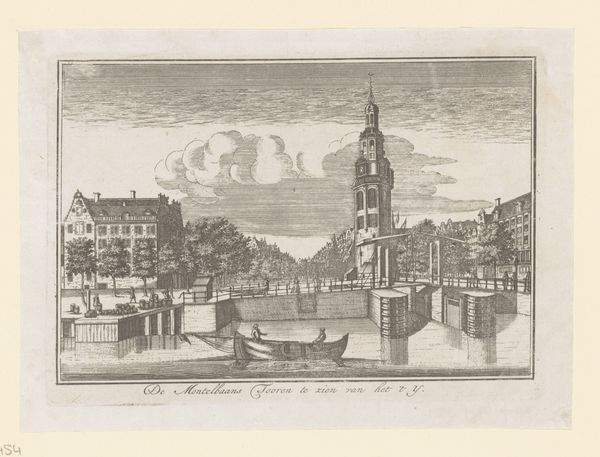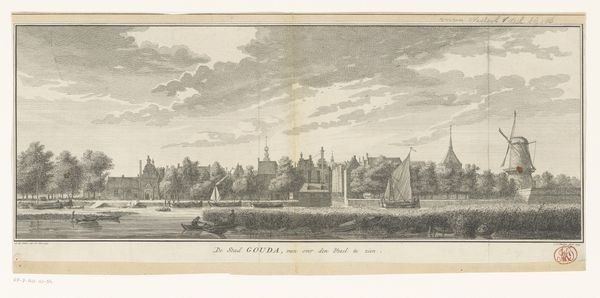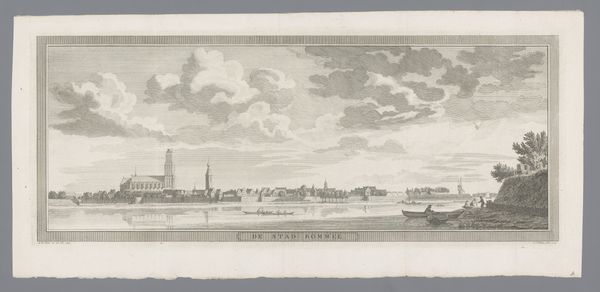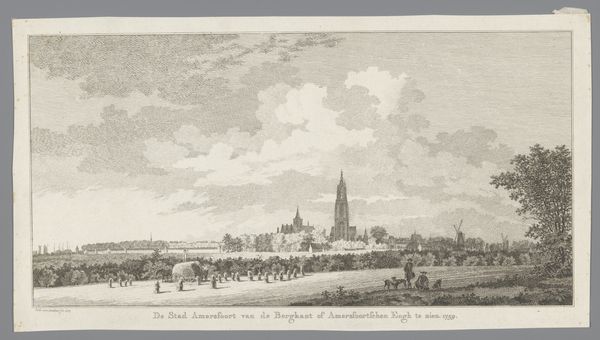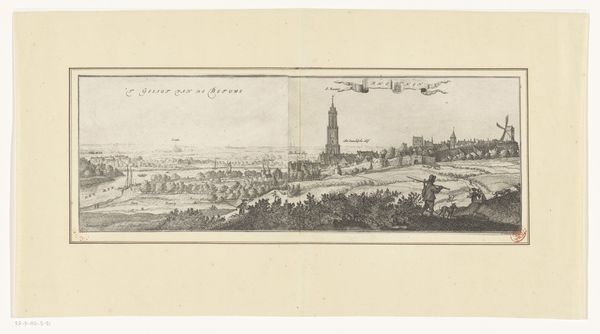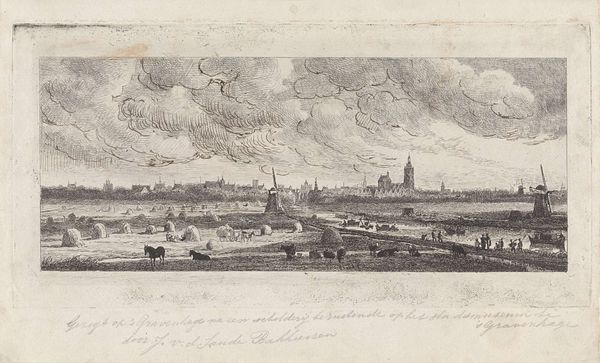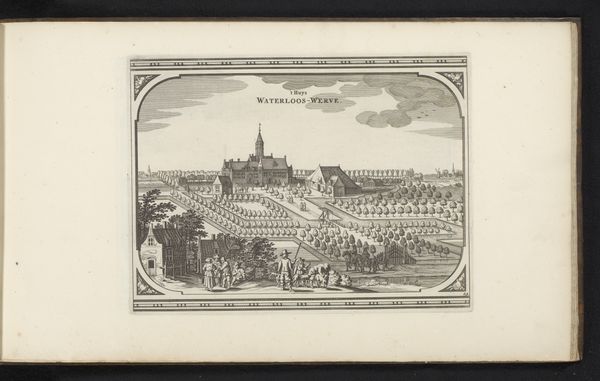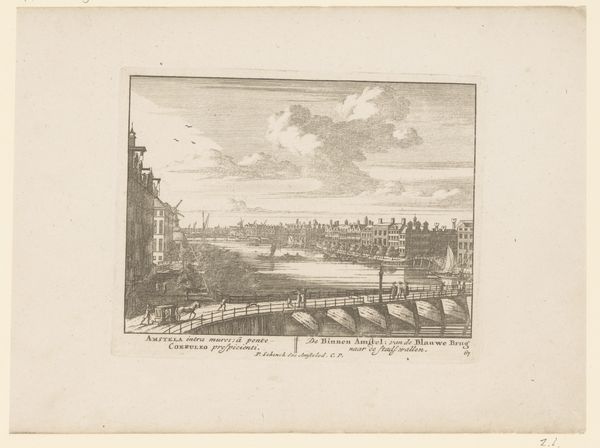
drawing, etching, ink
#
drawing
#
baroque
#
etching
#
landscape
#
river
#
ink
#
cityscape
Dimensions: height 179 mm, width 431 mm
Copyright: Rijks Museum: Open Domain
Editor: This is Jan Caspar Philips’s “Gezicht op Arnhem, 1739,” made around 1741 using etching and ink. It's a panoramic cityscape. The detail is incredible! What do you see in this piece? Curator: Beyond its aesthetic appeal, this work offers a lens into the power dynamics of the 18th century. The elevated viewpoint isn't just about showcasing the beauty of Arnhem; it’s about control, about visually possessing the land and its inhabitants. Notice how the church spire dominates the skyline – a visual assertion of religious and societal power. Editor: That’s interesting! I was just admiring the clouds, I hadn’t thought about the vantage point as a statement of control. Curator: Consider, too, what’s included and what’s omitted. The focus is on the grandeur of the city, likely for a specific patron and to project authority. What about the lives of ordinary people? Where are the marginalized communities within this idealized representation? Their stories are often absent in these formal depictions. Editor: So you’re saying the artist’s choices reflect certain social values of that period? Curator: Precisely! The etching acts as a kind of historical propaganda. Who gets to define and document history, and whose stories are erased in the process? Editor: Wow, I hadn't thought about landscape art having such a strong, loaded narrative. Curator: This piece makes us think critically about representation, doesn’t it? It urges us to examine not just what we see, but *why* we're seeing it this way, and who benefits from that perspective. Editor: This really challenged my initial interpretation. Thanks for making me think beyond the surface. Curator: And thank you for your insightful observations. Art like this calls us to reflect on history's impact on contemporary society, how representation perpetuates or challenges social constructs and power.
Comments
No comments
Be the first to comment and join the conversation on the ultimate creative platform.
